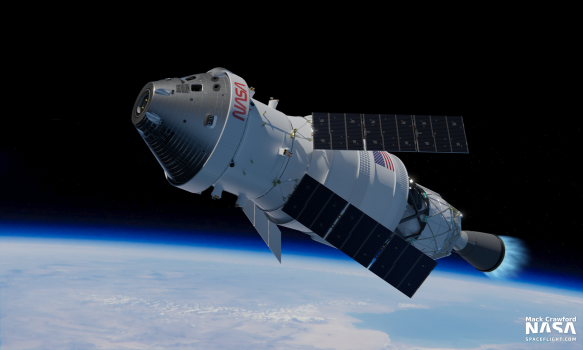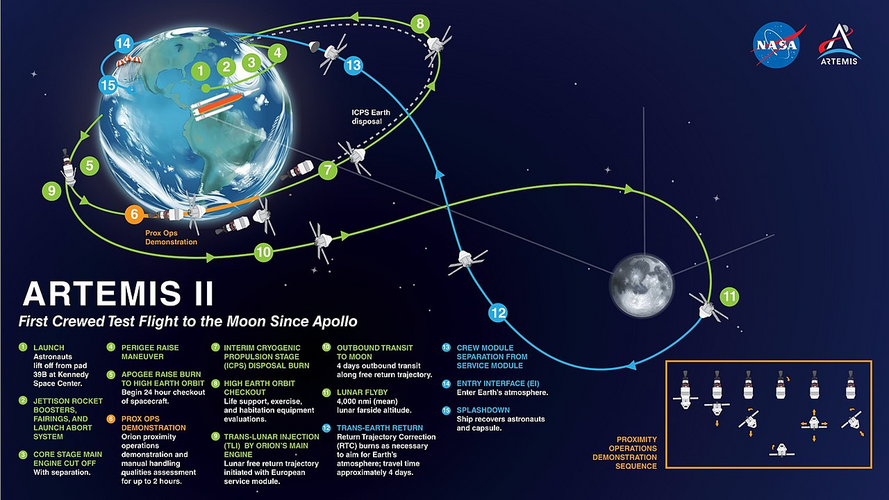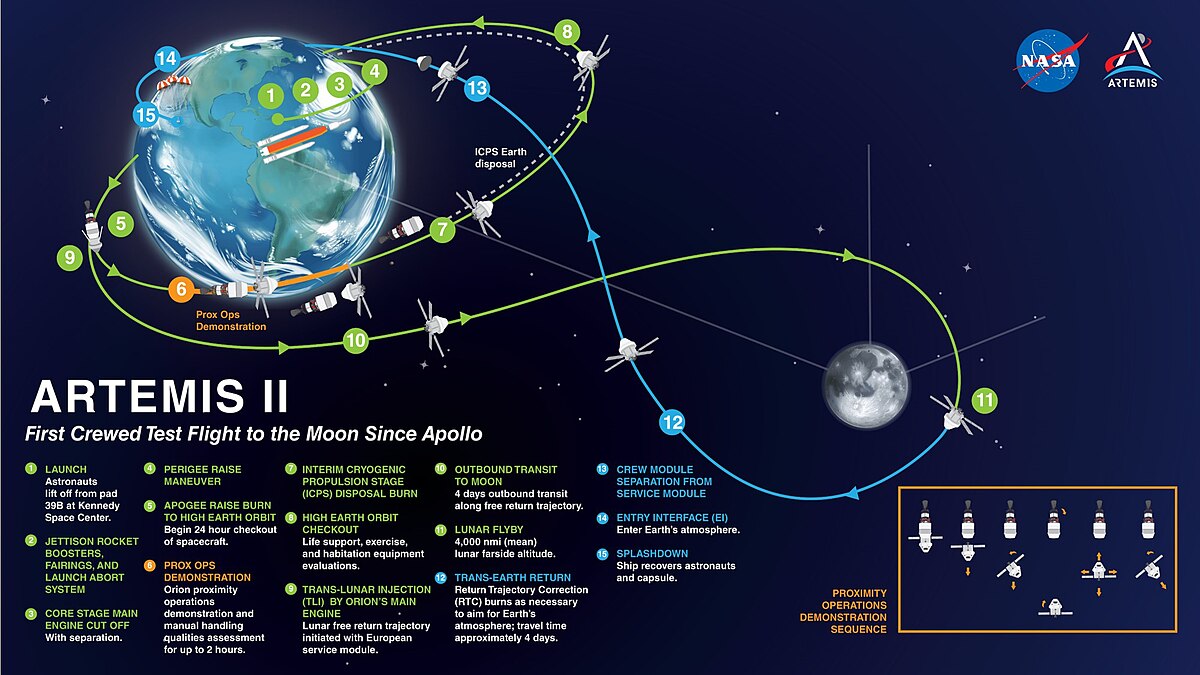martinbayer
ACCESS: Top Secret
- Joined
- 6 January 2009
- Messages
- 3,397
- Reaction score
- 3,904
I just wish humanity could do spaceflight without silly plush toys...
We live in strange times.I just wish humanity could do spaceflight without silly plush toys...
The @ulalaunch ICPS for the SLS on Artemis I performed quite well as a fully in-space upper stage. Exactly how well did it do & what are the schedules for the 2 ICPS elements for Artemis II & III? We spoke to ULA...
: me
️: Mack Crawford (@brickmack)

.@NASA_Orion is aboard the USS Portland and is making its way to Naval Base San Diego. It is expected to arrive onshore on December 13th with offload on December 15th
9 posts above (earlier than) yours is a list of spacecraft that used a skip re-entry profile.Didn't know they were going to do this, very interesting.

Orion capsule bounces off atmosphere to complete hottest and fastest reentry ever, capping off NASA's Artemis 1 mission
The capsule intentionally skipped like a stone off the atmosphere to make its reentry easier.www.livescience.com
As far as I know Apollo-11 did use the skip reentry profile.
On another note on tonight's six o'clock news in the article on the completion of Artemis-1's mission it showed time-lapse photographs showing the separation of the CM from the SM.
Pegasus, @NASA's barge, delivered the engine section for #Artemis III to @NASAKennedy on Dec. 10. The barge ferried the SLS hardware from #NASAMichoud, where it was manufactured, to Kennedy where teams will finish outfitting it. Check out some images from its journey!
Did you guy also noticed the Roast&Roll strategy?My bad, I never thought of it as a "skip".


But apparently that's what everyone calls it...

Did you guy also noticed the Roast&Roll strategy?
Unexpected livestream this morning because NASA let us unexpectedly close to Orion.
Heatshield close up!
Close up views of the Artemis I Orion capsule after its arrival at Naval Base San Diego on December 13.
Video from me for @NASASpaceflight. Edited by Sawyer (@thenasaman).

I wonder what all of those little weird white square patches are scattered around the upper heat shield are?
I'm surprised they didn't show footage from one of the solar-panel cameras showing the Orion CM separating from the SM.
I am surprised at the at as well NMaude
The engine section of @NASA_SLS core stage for #Artemis III mission arrived at the Space Station Processing Facility (SSPF) at @NASAKennedy on Dec. 15, 2022. Teams will begin processing operations ahead of final integration in the Vehicle Assembly Building.
Will NASA do the exactly the same trajectory with Artemis 2 as what they did with Artemis 1?


The @NASA_Orion spacecraft has arrived back at @NASAKennedy in Florida after an 1.4 million mile mission beyond the Moon and a cross-country truck ride from Naval Base San Diego in California.

View: https://twitter.com/nasagroundsys/status/1608943369958608897Artemis I Orion Spacecraft Returns to Kennedy Space Center
After its 1.4-million-mile mission beyond the Moon and back, the Orion spacecraft for the Artemis I mission arrived back at NASA’s Kennedy Space Center Dec. 30. The capsule splashed down in the Pacific Ocean on Dec. 11 and was transported by truck across the country from Naval Base San Diego in California to Kennedy’s Multi Payload Processing Facility in Florida.
Now that Orion is back at Kennedy, technicians will remove payloads from the capsule as part of de-servicing operations, including Commander Moonikin Campos, zero-gravity indicator Snoopy, and the official flight kit. Orion’s heat shield and other elements will be removed for extensive analysis, and remaining hazards will be offloaded.
Artemis I was a major step forward as part of NASA’s lunar exploration efforts and sets the stage for the next mission of the Space Launch System rocket and Orion to fly crew around the Moon on Artemis II.
Author Madison Tuttle
Posted on December 30, 2022 4:18 pm
Categories Uncategorized
Tags Artemis I, Exploration Ground Systems, Orion spacecraft
View: https://twitter.com/lmspace/status/1609223631602651138Preparations are underway to transport the @NASA_Orion spacecraft inside the High Bay of the Multi-Payload Processing Facility (MPPF) at @NASAKennedy.
It’s baaaaaaaack…
Yesterday, @NASA_Orion returned to @NASAKennedy and is now safely inside the Multi-Payload Processing Facility (MPPF). Welcome home!
/: @NASAGroundSys
View: https://twitter.com/nasaartemis/status/1608939902611214340
The @NASA_Orion spacecraft has arrived back at @NASAKennedy in Florida after an 1.4 million mile mission beyond the Moon and a cross-country truck ride from Naval Base San Diego in California.

Artemis I Orion Spacecraft Returns to Kennedy Space Center - NASA
After its 1.4-million-mile mission beyond the Moon and back, the Orion spacecraft for the Artemis I mission arrived back at NASA’s Kennedy Space Center Dec. 30. The capsule splashed down in the Pacific Ocean on Dec. 11 and was transported by truck across the country from Naval Base San Diego in...blogs.nasa.gov
View: https://twitter.com/nasagroundsys/status/1608943369958608897Artemis I Orion Spacecraft Returns to Kennedy Space Center
After its 1.4-million-mile mission beyond the Moon and back, the Orion spacecraft for the Artemis I mission arrived back at NASA’s Kennedy Space Center Dec. 30. The capsule splashed down in the Pacific Ocean on Dec. 11 and was transported by truck across the country from Naval Base San Diego in California to Kennedy’s Multi Payload Processing Facility in Florida.
Now that Orion is back at Kennedy, technicians will remove payloads from the capsule as part of de-servicing operations, including Commander Moonikin Campos, zero-gravity indicator Snoopy, and the official flight kit. Orion’s heat shield and other elements will be removed for extensive analysis, and remaining hazards will be offloaded.
Artemis I was a major step forward as part of NASA’s lunar exploration efforts and sets the stage for the next mission of the Space Launch System rocket and Orion to fly crew around the Moon on Artemis II.
Author Madison Tuttle
Posted on December 30, 2022 4:18 pm
Categories Uncategorized
Tags Artemis I, Exploration Ground Systems, Orion spacecraft
View: https://twitter.com/lmspace/status/1609223631602651138Preparations are underway to transport the @NASA_Orion spacecraft inside the High Bay of the Multi-Payload Processing Facility (MPPF) at @NASAKennedy.
It’s baaaaaaaack…
Yesterday, @NASA_Orion returned to @NASAKennedy and is now safely inside the Multi-Payload Processing Facility (MPPF). Welcome home!
/: @NASAGroundSys
The Purposeful Passengers consist of one manikin and two phantoms that flew aboard the Orion spacecraft during the Artemis I mission in order to collect important data that will prepare astronauts for future Artemis missions. The manikin was used to study vibrations and accelerations during the flight and was named Commander Moonikin Campos after NASA held a public naming contest in June 2021. The name "Campos" is a dedication to Arturo Campos, a Mexican-American electrical engineer who worked for NASA’s Johnson Space Center and contributed to the rescue of the Apollo 13 mission and crew.
The Orion spacecraft is back in Florida after Artemis I, a direct deposit on Mars, and an insightful mission comes to an end. These are a few of the stories to tell you about – This Week at NASA!
seems quite cost effective that way. however i would like to know what equipment specifically they are "refurbishing" it does reduce costs because of this.Apparently they are currently stripping the relevant equipment out of Artemis 1 that will be refurbished and subsequently fitted into Artemis 2.
I think it was mostly a politically driven decision to placate congress over costs back in the day.seems quite cost effective that way. however i would like to know what equipment specifically they are "refurbishing" it does reduce costs because of this.Apparently they are currently stripping the relevant equipment out of Artemis 1 that will be refurbished and subsequently fitted into Artemis 2.
(they were already past their budget on the launch of ARTEMIS1)
i would think its most of the interior avionics systems and computers.
but how big is the cost difference? maybe a couple million?
Alan Ladwig stated that they will continue this practice to the point of reusing the pressure capsule from ARTEMIS 3
seems a bit risky due the the stress from pressurizing and depressurizing but plausible.
seems a bit risky due the the stress from pressurizing and depressurizing but plausible.
Alan Ladwig stated that they will continue this practice to the point of reusing the pressure capsule from ARTEMIS 3
seems a bit risky due the the stress from pressurizing and depressurizing but plausible.
how many trips has one of those capsules endured? (without any reconstructions/overhauls?)Alan Ladwig stated that they will continue this practice to the point of reusing the pressure capsule from ARTEMIS 3
seems a bit risky due the the stress from pressurizing and depressurizing but plausible.
Why would this be risky? No one accuses the Dragon crew capsule of being risky, despite going through multiple cycles like this over its life.
how many trips has one of those capsules endured? (without any reconstructions/overhauls?)
i'm sure there is at least some concern over this. the only details i could find on this particular subject are quite vague and unclear. I'm also unsure of the number of capsules that have been completed and launched in total. (i'm sure there is more than one)
